
Corpse road
Encyclopedia
Corpse roads provided a practical means for transporting corpses, often from remote communities, to cemeteries
that had burial rights, such as parish churches and chapels of ease
. In Britain, such routes can also be known by a number of other names: bier road, burial road, coffin road, coffin line, lyke or lych way, funeral road, procession way, corpse way, etc. Such "church-ways" have developed a great deal of associated folklore
regarding wraiths, spirits, ghost
s, etc.
 In late medieval times a population increase and a concomitant expansion of church building took place in Great Britain inevitably encroaching on the territories of existing mother churches or minsters
In late medieval times a population increase and a concomitant expansion of church building took place in Great Britain inevitably encroaching on the territories of existing mother churches or minsters
. Demands for autonomy from outlying settlements made minster officials feel that their authority was waning, as were their revenues, so they instituted corpse roads connecting outlying locations and their mother churches (at the heart of parishes) that alone held burial rights. For some parishioners, this decision meant that corpses had to be transported long distances, sometimes through difficult terrain: usually a corpse had to be carried unless the departed was a wealthy individual. An example would be the funeral way that runs from Rydal
to Ambleside
in the Lake District where a coffin stone
, on which the coffin was placed while the parishioners rested, still exists. Many of the 'new' churches were eventually granted burial rights and corpse roads ceased to be used as such.
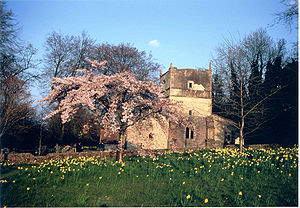
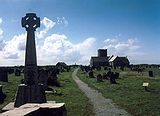 Many of the corpse roads have long disappeared, while the original purposes of those that still survive as footpaths have been largely forgotten, especially if features such as coffin stones or crosses no longer exist. Fields crossed by church-way paths often had names like "Church-way" or "Kirk-way Field", and today it is sometimes possible to plot the course of some lost church-ways by the sequence of old field names, local knowledge of churches, local legends and lost features of the landscape marked on old maps, etc. One of the oldest superstitions is that any land over which a corpse is carried becomes a public right of way.
Many of the corpse roads have long disappeared, while the original purposes of those that still survive as footpaths have been largely forgotten, especially if features such as coffin stones or crosses no longer exist. Fields crossed by church-way paths often had names like "Church-way" or "Kirk-way Field", and today it is sometimes possible to plot the course of some lost church-ways by the sequence of old field names, local knowledge of churches, local legends and lost features of the landscape marked on old maps, etc. One of the oldest superstitions is that any land over which a corpse is carried becomes a public right of way.
An example of a corpse road or way is that of the church of St Peter and Paul at Blockley
, in Gloucestershire
, which held the burial right to the inhabitants of the hamlets Stretton-on-Fosse
in Warwickshire
, where there was a chapel which became a rectory in the 12th century, and Aston Magna
, where there was a chapel which was merely a chantry. All 'tithes' and 'mortuaries', however, came to the parish church of Blockley, to which church the people of Stretton and Aston were committed to carry their deceased for burial. The corpse road from Aston to Blockley churchyard is over two miles (3 km) long and crosses three small streams en route. The corpse road from Stretton to Blockley runs for some four miles (6 km) and crosses two streams.
move through the physical landscape along special routes. In their ideal, pristine form, at least, such routes are conceived of as being straight, having something in common with ley line
s. By the same token, convoluted or non-linear features hinder spirit movement i.e. labyrinth
s and maze
s.
 Spirits or ghosts were said to fly along on a direct course close to the ground, so a straight line connecting two places was kept clear of fences, walls, and buildings to avoid obstructing the flitting spectres. The paths would run in a straight line over mountains and valleys and through marshes. In towns, they would pass the houses closely or go right through them. The paths end or originate at a cemetery; therefore, such a path or road was believed to have the same characteristics as a cemetery, where spirits of the deceased thrive.
Spirits or ghosts were said to fly along on a direct course close to the ground, so a straight line connecting two places was kept clear of fences, walls, and buildings to avoid obstructing the flitting spectres. The paths would run in a straight line over mountains and valleys and through marshes. In towns, they would pass the houses closely or go right through them. The paths end or originate at a cemetery; therefore, such a path or road was believed to have the same characteristics as a cemetery, where spirits of the deceased thrive.
The corpse roads or ways were left unploughed and it was considered very bad luck if for any reason a different route had to be taken.
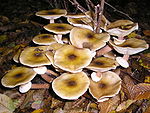 Among European rural people, especially in Gaelic, Slavic
Among European rural people, especially in Gaelic, Slavic
and Germanic
folk culture
s, the will-o'-the-wisp
s are held to be mischievous spirits of the dead
or other supernatural
beings attempting to lead travellers astray (compare Puck
). Sometimes they are believed to be the spirits of unbaptized or stillborn children, flitting between heaven
and hell
. Other names are Jack O' Lantern, or Joan of the Wad, Jenny Burn-tail, Kitty wi' the Whisp, or Spunkie.
Anybody seeing this phenomenon might merely have been seeing, without knowing, a luminescent Barn Owl
, at least in some instances. Much anecdotal evidence supports the fact that Barn Owls have a luminescence which may be due to fungal bioluminescence (honey fungus
It is also possible those who have observed corpse candles may have been witnessing the effect of methane gasses produced by decomposing organic material found in swamps, marshlands and bogs
 In Shakespeare's A Midsummer Night's Dream
In Shakespeare's A Midsummer Night's Dream
, Puck
says:
Puck suggests a secret history of these routes, for unsurprisingly they attracted long extant folk lore, running not only through the physical countryside but also through the invisible geography, the 'mental terrain', of pre-industrial country-folk. Shakespeare's lines leave little doubt that the physical corpse roads came to be perceived as being spirit routes, taking on qualities which lingered in the folklore of his age and which he incorporated into his play knowing that it would be a familiar concept.
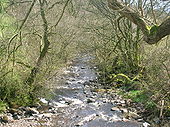 The spirit roads, such as the church-ways, were always conceived of as being straight, but the physical corpse roads of the United Kingdom vary as much as any other path. Corpses were conveyed along defined corpse roads to avoid their spirits returning to haunt the living. It was a widespread custom, for example, that the feet of the corpse be kept pointing away from the family home on its journey to the cemetery.
The spirit roads, such as the church-ways, were always conceived of as being straight, but the physical corpse roads of the United Kingdom vary as much as any other path. Corpses were conveyed along defined corpse roads to avoid their spirits returning to haunt the living. It was a widespread custom, for example, that the feet of the corpse be kept pointing away from the family home on its journey to the cemetery.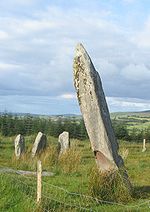 Other minor ritualistic means of preventing the return of the dead person included ensuring that the route the corpse took to burial would take it over bridges or stepping stones across running water which spirits could not cross, stiles, and various other 'liminal' ("betwixt and between") locations, all of which had reputations for preventing or hindering the free passage of spirits. The living took pains to prevent the dead from wandering the land as lost souls or animated corpses, for the belief in revenant
Other minor ritualistic means of preventing the return of the dead person included ensuring that the route the corpse took to burial would take it over bridges or stepping stones across running water which spirits could not cross, stiles, and various other 'liminal' ("betwixt and between") locations, all of which had reputations for preventing or hindering the free passage of spirits. The living took pains to prevent the dead from wandering the land as lost souls or animated corpses, for the belief in revenant
s (ghosts) was widespread in mediæval Europe.
People using the corpse roads assumed that they could be passages for ghosts. The ancient spirit folklore that attached itself to the medieval and later corpse roads also may have informed certain prehistoric features. In Britain, for instance, Neolithic earthen avenues called cursus
es link burial mounds: these features can run for considerable distances, even miles, and are largely straight, or straight in segments, connecting funerary sites. The purpose of these avenues is imperfectly understood, but some kind of spirit-way function may be one reasonable explanation. Similarly, some Neolithic and Bronze Age graves, especially in France and Britain, are associated with stone rows, like those at Merrivale
on Dartmoor
, with intriguing blocking stones at their ends.
Homer Sykes in Mysterious Britain says that the 'holed' Cornish 'Tolvan' stone was used to block a now lost ancient burial chamber, and suggests that the hole allowed a way in for funeral purposes and a passage out for the spirits of the dead.
In Britain, around 4000–6000 years old, bog causeways constructed from timber have been excavated. The "Sweet Track" in Somerset
, is one of the oldest and the excavations along this old straight track indicated that one of its uses was for transporting the dead.
off Ireland each passing funeral would stop and erect a memorial pile of stones on the smooth rocky surface on the roadside enclosure.
A Devon
legend tells of a funeral procession heading across Dartmoor
on its way to Widecombe and the burial ground, carrying a particularly unpopular and evil old man. They reach the coffin stone and place the coffin on it while they rest. A beam of light strikes the coffin, reducing it and its contents to ashes and splitting the coffin stone. The party believes that God did not wish to have such an evil man buried in a cemetery.
Some country-folk claim that if a dead body is carried across a field it will thereafter fail to produce good crop yields. Throughout the United Kingdom and Europe it still believed that touching a corpse in the coffin will allow the departed spirit to go in peace to its rest, and bring good luck to the living.
An old woman at Fryup
in Yorkshire
was well known locally for keeping the "Mark's e’en watch" (24 April), as she lived alongside a corpse road known as the "Old Hell Road". In this 'watch', typically a village seer would hold a vigil between 11 pm and 1 am on St. Mark
's Day, in order to look for the wraiths of those who would die in the following year.
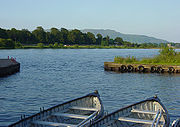 Phantom lights are sometimes seen on the Scottish cemetery-island of Mun in Loch Leven
Phantom lights are sometimes seen on the Scottish cemetery-island of Mun in Loch Leven
and traditionally such lights were thought to be omens of impending death; the soul also was thought to depart the body in the form of a flame or light.
In Ireland, the féar gortach ("hungry grass"/"violent hunger") is said to grow at a place where an unenclosed corpse was laid on its way to burial. This is thought to be a permanent effect and anyone who stands on such grass is said to develop insatiable hunger. One such place is in Ballinamore
and was so notorious that the woman of the nearby house kept a supply of food on hand for victims.
The existence of specific coffin stones, crosses or lych gates on church-ways, suggests that these may have been specially positioned and sanctified so as to allow the coffin to be placed there temporarily without the chance of the ground becoming in some way tainted or the spirit given an opportunity to escape and haunt its place of death.
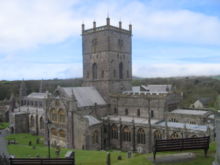 Gerald of Wales
Gerald of Wales
(Giraldus Cambrensis) in the 13th-century relates the strange story of a marble footbridge leading from the church over the Alan rivulet in Saint David
s. The marble stone was called 'Llechllafar' (the talking stone) because it once spoke when a corpse was carried over it to the cemetery for internment. The effort of speech had caused it to break, despite its size of ten feet in length, six in breadth and one in thickness. This bridge was worn smooth due to its age and the thousands of people who had walked over it, however the superstition was so widely held that corpses were no longer carried over it. This ancient bridge was replaced in the 16th century and its present location is not known.
Another legend is that Merlin
had prophesied the death on Llechllafar of an English King, conqueror of Ireland, who had been injured by a man with a red hand. King Henry II
went on pilgrimage to Saint David's after coming from Ireland, heard of the prophecy and crossed Llechllafar without ill effect. He boasted that Merlin was a liar, to which a bystander replied that the King would not conquer Ireland and was therefore not the king of the prophecy. This turned out to be true, for Henry never did conquer the whole of Ireland.
The villagers in Manaton
in Devon used to carry coffins three times round the churchyard cross, much to the irritation of the vicar, who opposed the superstition. Upon being ignored, he had the cross destroyed.
The 'Lych way' is a track lying to the south-west of Devil's Tor on Dartmoor. The dead from remote moorland homesteads were taken along this track to Lydford
church for burial. Many reports have been made of monks in white and phantom funeral processions seen walking along this path.
Childe's Tomb on Dartmoor is the site of the death of Childe who was caught in a snowstorm, killed and disembowelled his horse and climbed inside for shelter, but still froze to death. He left a message to say that the first person to bury him would get his lands at Plymstock
. The greedy monks of Tavistock buried him and claimed the lands. The ghosts of monks carrying a bier
have been seen at Childe's tomb.
indicated the right road at such places and was a guide to the traveler's footsteps. The god of the dead was the divinity of the crossroad and later Christian crosses were erected at such places.
Crossroads divination
was conducted in Britain and other parts of Europe, and is associated with the belief that the Devil
could be made to manifest at such intersections. Crossroads lore also includes the idea that spirits of the dead could be "bound" (immobilized or rendered powerless) at crossroads, specifically suicides and hanged criminals, but also witches, outlaws and gypsies. The belief was that since straight routes could facilitate the movement of spirits, so contrary features like crossroads and stone or turf labyrinth
s could hinder it. An example of a crossroad execution-ground was the famous Tyburn, London
, which stood on the spot where the Roman road to Edgware
crossed the Roman road heading west out of London.

 This was part of a broader fear of spirits that might flit into dwellings. Witch bottle
This was part of a broader fear of spirits that might flit into dwellings. Witch bottle
s were common throughout Europe – bottles or glass spheres containing a mass of threads, often with charms entangled in them. Its purpose was to draw in and trap evil and negative energy directed at its owner. Folk magic contends that the witch bottle protects against evil spirits and magical attack, and counteracts spells cast by witches, also forestalling the passage into habitations of witches flying about at night. A Witchball was much the same; however, a more light-hearted belief was that the witch saw her distorted face in the curved glass and was frightened away. The term witch ball is probably a corruption of watch ball because it was used as a guard of evil spirits.
If straight lines did not hinder the passage of spirits, then convoluted or tangled "lines" could ensnare them and ancient stone and turf labyrinths, found in many parts of Europe and Scandinavia, could serve the purpose of capturing evil spirits.
NASA surveys detected straight paths running considerable distances through the mountainous rainforest. Upon closer examination these routes were found to date from AD500-1200 and had been constructed as Corpse paths, along which bodies were carried to burial.
A straight Viking cult or Corpse road at Rosaring, Uppland
, Sweden, was unearthed by archaeologists. The body of the dead Viking chieftains were drawn along it in a ceremonial wagon to the grave site. The Netherlands had the Doodwegen or Spokenwegen, the deathroads or ghostroads, converging on medieval cemeteries, some surviving in straight section fragments to this day.
During several dynasties of the imperial China, the pathway to the burial mound of an emperor or a high dignitary would be lined with the statues of real and fantastic animals and of the civil and military officials, and would be known as the shendao (spirit way
) At major imperial mausolea, such as Ming Xiaoling in Nanjing
or the Ming Dynasty Tombs
near Beijing
, the spirit way could be several hundreds of meters, sometimes over a kilometer, long.
Cemetery
A cemetery is a place in which dead bodies and cremated remains are buried. The term "cemetery" implies that the land is specifically designated as a burying ground. Cemeteries in the Western world are where the final ceremonies of death are observed...
that had burial rights, such as parish churches and chapels of ease
Chapel of ease
A chapel of ease is a church building other than the parish church, built within the bounds of a parish for the attendance of those who cannot reach the parish church conveniently....
. In Britain, such routes can also be known by a number of other names: bier road, burial road, coffin road, coffin line, lyke or lych way, funeral road, procession way, corpse way, etc. Such "church-ways" have developed a great deal of associated folklore
Folklore
Folklore consists of legends, music, oral history, proverbs, jokes, popular beliefs, fairy tales and customs that are the traditions of a culture, subculture, or group. It is also the set of practices through which those expressive genres are shared. The study of folklore is sometimes called...
regarding wraiths, spirits, ghost
Ghost
In traditional belief and fiction, a ghost is the soul or spirit of a deceased person or animal that can appear, in visible form or other manifestation, to the living. Descriptions of the apparition of ghosts vary widely from an invisible presence to translucent or barely visible wispy shapes, to...
s, etc.
Origins

Minster (cathedral)
Minster is an honorific title given to particular churches in England, most famously York Minster. The term minster is first found in royal foundation charters of the 7th century; and, although it corresponds to the Latin monasterium or monastery, it then designated any settlement of clergy living...
. Demands for autonomy from outlying settlements made minster officials feel that their authority was waning, as were their revenues, so they instituted corpse roads connecting outlying locations and their mother churches (at the heart of parishes) that alone held burial rights. For some parishioners, this decision meant that corpses had to be transported long distances, sometimes through difficult terrain: usually a corpse had to be carried unless the departed was a wealthy individual. An example would be the funeral way that runs from Rydal
Rydal, Cumbria
Rydal is an English village located in the shire county of Cumbria, which is in North West England. Historically within Westmorland, the village of Rydal is situated on the A591 road....
to Ambleside
Ambleside
Ambleside is a town in Cumbria, in North West England.Historically within the county of Westmorland, it is situated at the head of Windermere, England's largest lake...
in the Lake District where a coffin stone
Coffin Stone
The Coffin Stone is a large sarsen stone at the foot of Blue Bell Hill near Aylesford in the English county of Kent.The stone is one of the Medway megaliths lying 400 m west of the Countless Stones . It is a rectangular stone lying flat and measuring 4.4 m long and 2.8 m wide...
, on which the coffin was placed while the parishioners rested, still exists. Many of the 'new' churches were eventually granted burial rights and corpse roads ceased to be used as such.
Church-way paths


An example of a corpse road or way is that of the church of St Peter and Paul at Blockley
Blockley
Blockley is a village and civil parish in the Cotswold district of Gloucestershire, England, about northwest of Moreton-in-Marsh. Until 1931 Blockley was an exclave of Worcestershire....
, in Gloucestershire
Gloucestershire
Gloucestershire is a county in South West England. The county comprises part of the Cotswold Hills, part of the flat fertile valley of the River Severn, and the entire Forest of Dean....
, which held the burial right to the inhabitants of the hamlets Stretton-on-Fosse
Stretton-on-Fosse
Stretton-on-Fosse is a small village and civil parish with fewer than 200 houses, most built of Cotswold stone or locally-made red brick, situated on the Warwickshire-Gloucestershire border on the fringe of the Cotswold Hills.-History:...
in Warwickshire
Warwickshire
Warwickshire is a landlocked non-metropolitan county in the West Midlands region of England. The county town is Warwick, although the largest town is Nuneaton. The county is famous for being the birthplace of William Shakespeare...
, where there was a chapel which became a rectory in the 12th century, and Aston Magna
Aston Magna
Aston Magna is a hamlet located off Fosse Way in north Gloucestershire between Moreton-in-Marsh and Shipston-on-Stour.- See also :*Corpse roads...
, where there was a chapel which was merely a chantry. All 'tithes' and 'mortuaries', however, came to the parish church of Blockley, to which church the people of Stretton and Aston were committed to carry their deceased for burial. The corpse road from Aston to Blockley churchyard is over two miles (3 km) long and crosses three small streams en route. The corpse road from Stretton to Blockley runs for some four miles (6 km) and crosses two streams.
The spirits of the dead
The essence of deep-rooted spirit lore is that supposed spirits of one kind or another – spirits of the dead, phantasms of the living, wraiths, or nature entities like fairiesFairy path
According to folklore a fairy path is a route taken by fairies usually in a straight line and between sites of traditional significance, such as fairy forts or raths , “airy” mountains and hills, thorn bushes, springs, lakes, rock outcrops, and Stone Age monuments...
move through the physical landscape along special routes. In their ideal, pristine form, at least, such routes are conceived of as being straight, having something in common with ley line
Ley line
Ley lines are alleged alignments of a number of places of geographical and historical interest, such as ancient monuments and megaliths, natural ridge-tops and water-fords...
s. By the same token, convoluted or non-linear features hinder spirit movement i.e. labyrinth
Labyrinth
In Greek mythology, the Labyrinth was an elaborate structure designed and built by the legendary artificer Daedalus for King Minos of Crete at Knossos...
s and maze
Maze
A maze is a tour puzzle in the form of a complex branching passage through which the solver must find a route. In everyday speech, both maze and labyrinth denote a complex and confusing series of pathways, but technically the maze is distinguished from the labyrinth, as the labyrinth has a single...
s.

The corpse roads or ways were left unploughed and it was considered very bad luck if for any reason a different route had to be taken.
Corpse candles and other related phenomena
A corpse candle or light is a flame or ball of light, often blue, that is seen to travel just above the ground on the route from the cemetery to the dying person's house and back again. A corpse fire is very similar as the name comes from lights appearing specifically within graveyards where it was believed the lights were an omen of death or coming tragedy and would mark the route of a future funeral, from the victim's house to the graveyard, where it would vanish into the ground at the site of the burial. The appearance was often said to be on the night before a death.
Slavic peoples
The Slavic people are an Indo-European panethnicity living in Eastern Europe, Southeast Europe, North Asia and Central Asia. The term Slavic represents a broad ethno-linguistic group of people, who speak languages belonging to the Slavic language family and share, to varying degrees, certain...
and Germanic
Germanic peoples
The Germanic peoples are an Indo-European ethno-linguistic group of Northern European origin, identified by their use of the Indo-European Germanic languages which diversified out of Proto-Germanic during the Pre-Roman Iron Age.Originating about 1800 BCE from the Corded Ware Culture on the North...
folk culture
Folk culture
Folk culture refers to the lifestyle of a culture. Historically, handed down through oral tradition, it demonstrates the "old ways" over novelty and relates to a sense of community. Folk culture is quite often imbued with a sense of place...
s, the will-o'-the-wisp
Will-o'-the-wisp
A will-o'-the-wisp or ignis fatuus , also called a "will-o'-wisp", "jack-o'-lantern" , "hinkypunk", "corpse candle", "ghost-light", "spook-light", "fairy light", "friar's lantern", "hobby lantern", "ghost orb", or simply "wisp", is a ghostly light or lights sometimes seen at night or twilight over...
s are held to be mischievous spirits of the dead
Death
Death is the permanent termination of the biological functions that sustain a living organism. Phenomena which commonly bring about death include old age, predation, malnutrition, disease, and accidents or trauma resulting in terminal injury....
or other supernatural
Supernatural
The supernatural or is that which is not subject to the laws of nature, or more figuratively, that which is said to exist above and beyond nature...
beings attempting to lead travellers astray (compare Puck
Puck (mythology)
In English folklore, Puck is a mythological fairy or mischievous nature sprite. Puck is also a generalised personification of land spirits. In more recent times, the figure of Robin Goodfellow is identified as a puck.-Etymology:...
). Sometimes they are believed to be the spirits of unbaptized or stillborn children, flitting between heaven
Heaven
Heaven, the Heavens or Seven Heavens, is a common religious cosmological or metaphysical term for the physical or transcendent place from which heavenly beings originate, are enthroned or inhabit...
and hell
Hell
In many religious traditions, a hell is a place of suffering and punishment in the afterlife. Religions with a linear divine history often depict hells as endless. Religions with a cyclic history often depict a hell as an intermediary period between incarnations...
. Other names are Jack O' Lantern, or Joan of the Wad, Jenny Burn-tail, Kitty wi' the Whisp, or Spunkie.
Anybody seeing this phenomenon might merely have been seeing, without knowing, a luminescent Barn Owl
Barn Owl
The Barn Owl is the most widely distributed species of owl, and one of the most widespread of all birds. It is also referred to as Common Barn Owl, to distinguish it from other species in the barn-owl family Tytonidae. These form one of two main lineages of living owls, the other being the typical...
, at least in some instances. Much anecdotal evidence supports the fact that Barn Owls have a luminescence which may be due to fungal bioluminescence (honey fungus
Honey fungus
Honey fungus, or Armillaria or оpenky , is a genus of parasitic fungi that live on trees and woody shrubs. It includes about 10 species formerly lumped together as A. mellea. Armillarias are long lived and form some of the largest living organisms in the world...
It is also possible those who have observed corpse candles may have been witnessing the effect of methane gasses produced by decomposing organic material found in swamps, marshlands and bogs
A Midsummer Night's Dream

A Midsummer Night's Dream
A Midsummer Night's Dream is a play that was written by William Shakespeare. It is believed to have been written between 1590 and 1596. It portrays the events surrounding the marriage of the Duke of Athens, Theseus, and the Queen of the Amazons, Hippolyta...
, Puck
Puck (Shakespeare)
Puck, also known as Robin Goodfellow, is a character in William Shakespeare's play A Midsummer Night's Dream that was based on the ancient figure in English mythology, also called Puck. Puck is a clever and mischievous elf and personifies the trickster or the wise knave...
says:
Now it is that time of night, That the graves all gaping wide, Every one lets forth his sprite, In the church-way paths to glide. |
Puck suggests a secret history of these routes, for unsurprisingly they attracted long extant folk lore, running not only through the physical countryside but also through the invisible geography, the 'mental terrain', of pre-industrial country-folk. Shakespeare's lines leave little doubt that the physical corpse roads came to be perceived as being spirit routes, taking on qualities which lingered in the folklore of his age and which he incorporated into his play knowing that it would be a familiar concept.
Spirit roads and archaeological features


Medieval revenant
A revenant is a visible ghost or animated corpse that was believed to return from the grave to terrorize the living. The word "revenant" is derived from the Latin word, revenans, "returning", from the verb "revenire"; in French, "revenant" means "coming back", from the verb "revenir", meaning "to...
s (ghosts) was widespread in mediæval Europe.
People using the corpse roads assumed that they could be passages for ghosts. The ancient spirit folklore that attached itself to the medieval and later corpse roads also may have informed certain prehistoric features. In Britain, for instance, Neolithic earthen avenues called cursus
Cursus
thumb|right|250px|[[Stonehenge Cursus]], Wiltshirethumb|right|250px|[[Dorset Cursus]] terminal on Thickthorn Down, DorsetCursus was a name given by early British archaeologists such as William Stukeley to the large parallel lengths of banks with external ditches which they thought were early Roman...
es link burial mounds: these features can run for considerable distances, even miles, and are largely straight, or straight in segments, connecting funerary sites. The purpose of these avenues is imperfectly understood, but some kind of spirit-way function may be one reasonable explanation. Similarly, some Neolithic and Bronze Age graves, especially in France and Britain, are associated with stone rows, like those at Merrivale
Merrivale, Devon
Merrivale is a locality in western Dartmoor, in the West Devon district of Devon, England. It is best known for the nearby series of Bronze Age megalithic monuments to the south and a former granite quarry.-Merrivale hamlet:...
on Dartmoor
Dartmoor
Dartmoor is an area of moorland in south Devon, England. Protected by National Park status, it covers .The granite upland dates from the Carboniferous period of geological history. The moorland is capped with many exposed granite hilltops known as tors, providing habitats for Dartmoor wildlife. The...
, with intriguing blocking stones at their ends.
Homer Sykes in Mysterious Britain says that the 'holed' Cornish 'Tolvan' stone was used to block a now lost ancient burial chamber, and suggests that the hole allowed a way in for funeral purposes and a passage out for the spirits of the dead.
In Britain, around 4000–6000 years old, bog causeways constructed from timber have been excavated. The "Sweet Track" in Somerset
Somerset
The ceremonial and non-metropolitan county of Somerset in South West England borders Bristol and Gloucestershire to the north, Wiltshire to the east, Dorset to the south-east, and Devon to the south-west. It is partly bounded to the north and west by the Bristol Channel and the estuary of the...
, is one of the oldest and the excavations along this old straight track indicated that one of its uses was for transporting the dead.
Associated legends and beliefs
On Aranmore IslandAran Islands
The Aran Islands or The Arans are a group of three islands located at the mouth of Galway Bay, on the west coast of Ireland. They constitute the barony of Aran in County Galway, Ireland...
off Ireland each passing funeral would stop and erect a memorial pile of stones on the smooth rocky surface on the roadside enclosure.
A Devon
Devon
Devon is a large county in southwestern England. The county is sometimes referred to as Devonshire, although the term is rarely used inside the county itself as the county has never been officially "shired", it often indicates a traditional or historical context.The county shares borders with...
legend tells of a funeral procession heading across Dartmoor
Dartmoor
Dartmoor is an area of moorland in south Devon, England. Protected by National Park status, it covers .The granite upland dates from the Carboniferous period of geological history. The moorland is capped with many exposed granite hilltops known as tors, providing habitats for Dartmoor wildlife. The...
on its way to Widecombe and the burial ground, carrying a particularly unpopular and evil old man. They reach the coffin stone and place the coffin on it while they rest. A beam of light strikes the coffin, reducing it and its contents to ashes and splitting the coffin stone. The party believes that God did not wish to have such an evil man buried in a cemetery.
Some country-folk claim that if a dead body is carried across a field it will thereafter fail to produce good crop yields. Throughout the United Kingdom and Europe it still believed that touching a corpse in the coffin will allow the departed spirit to go in peace to its rest, and bring good luck to the living.
An old woman at Fryup
Fryup
Fryup is a hamlet in North Yorkshire in England. It is in the civil parish of Danby and is located alongside Great Fryup Beck in the Great Fryup Dale. It may be found at ....
in Yorkshire
Yorkshire
Yorkshire is a historic county of northern England and the largest in the United Kingdom. Because of its great size in comparison to other English counties, functions have been increasingly undertaken over time by its subdivisions, which have also been subject to periodic reform...
was well known locally for keeping the "Mark's e’en watch" (24 April), as she lived alongside a corpse road known as the "Old Hell Road". In this 'watch', typically a village seer would hold a vigil between 11 pm and 1 am on St. Mark
Mark the Evangelist
Mark the Evangelist is the traditional author of the Gospel of Mark. He is one of the Seventy Disciples of Christ, and the founder of the Church of Alexandria, one of the original four main sees of Christianity....
's Day, in order to look for the wraiths of those who would die in the following year.

Loch Leven
Loch Leven is a fresh water loch in Perth and Kinross council area, central Scotland.Roughly triangular, the loch is about 6 km at its longest. The burgh of Kinross lies at its western end. Loch Leven Castle lies on an island a short way offshore...
and traditionally such lights were thought to be omens of impending death; the soul also was thought to depart the body in the form of a flame or light.
In Ireland, the féar gortach ("hungry grass"/"violent hunger") is said to grow at a place where an unenclosed corpse was laid on its way to burial. This is thought to be a permanent effect and anyone who stands on such grass is said to develop insatiable hunger. One such place is in Ballinamore
Ballinamore
Ballinamore is a small town in County Leitrim, Ireland, from the border with Northern Ireland. It is located on the R202 regional road where it is joined by the R199 and R204. means "mouth of the big ford", and the town is so named because it was the main crossing point of the Yellow River,...
and was so notorious that the woman of the nearby house kept a supply of food on hand for victims.
The existence of specific coffin stones, crosses or lych gates on church-ways, suggests that these may have been specially positioned and sanctified so as to allow the coffin to be placed there temporarily without the chance of the ground becoming in some way tainted or the spirit given an opportunity to escape and haunt its place of death.

Giraldus Cambrensis
Gerald of Wales , also known as Gerallt Gymro in Welsh or Giraldus Cambrensis in Latin, archdeacon of Brecon, was a medieval clergyman and chronicler of his times...
(Giraldus Cambrensis) in the 13th-century relates the strange story of a marble footbridge leading from the church over the Alan rivulet in Saint David
Saint David
Saint David was a Welsh Bishop during the 6th century; he was later regarded as a saint and as the patron saint of Wales. David was a native of Wales, and a relatively large amount of information is known about his life. However, his birth date is still uncertain, as suggestions range from 462 to...
s. The marble stone was called 'Llechllafar' (the talking stone) because it once spoke when a corpse was carried over it to the cemetery for internment. The effort of speech had caused it to break, despite its size of ten feet in length, six in breadth and one in thickness. This bridge was worn smooth due to its age and the thousands of people who had walked over it, however the superstition was so widely held that corpses were no longer carried over it. This ancient bridge was replaced in the 16th century and its present location is not known.
Another legend is that Merlin
Merlin
Merlin is a legendary figure best known as the wizard featured in the Arthurian legend. The standard depiction of the character first appears in Geoffrey of Monmouth's Historia Regum Britanniae, written c. 1136, and is based on an amalgamation of previous historical and legendary figures...
had prophesied the death on Llechllafar of an English King, conqueror of Ireland, who had been injured by a man with a red hand. King Henry II
Henry II of England
Henry II ruled as King of England , Count of Anjou, Count of Maine, Duke of Normandy, Duke of Aquitaine, Duke of Gascony, Count of Nantes, Lord of Ireland and, at various times, controlled parts of Wales, Scotland and western France. Henry, the great-grandson of William the Conqueror, was the...
went on pilgrimage to Saint David's after coming from Ireland, heard of the prophecy and crossed Llechllafar without ill effect. He boasted that Merlin was a liar, to which a bystander replied that the King would not conquer Ireland and was therefore not the king of the prophecy. This turned out to be true, for Henry never did conquer the whole of Ireland.
The villagers in Manaton
Manaton
The village of Manaton is situated on the south-eastern side of Dartmoor National Park, Devon, England.The 15th century church, in a prominent spot to the north of the village green, is dedicated to St Winifred. Three of the six bells in its tower are medieval - markings on the oldest indicate a...
in Devon used to carry coffins three times round the churchyard cross, much to the irritation of the vicar, who opposed the superstition. Upon being ignored, he had the cross destroyed.
The 'Lych way' is a track lying to the south-west of Devil's Tor on Dartmoor. The dead from remote moorland homesteads were taken along this track to Lydford
Lydford
Lydford, sometimes spelled Lidford, is a village, once an important town, in Devon situated north of Tavistock on the western fringe of Dartmoor in the West Devon district.-Description:The village has a population of 458....
church for burial. Many reports have been made of monks in white and phantom funeral processions seen walking along this path.
Childe's Tomb on Dartmoor is the site of the death of Childe who was caught in a snowstorm, killed and disembowelled his horse and climbed inside for shelter, but still froze to death. He left a message to say that the first person to bury him would get his lands at Plymstock
Plymstock
Plymstock is a civil parish and commuter suburb of Plymouth in the English county of Devon.The earliest surviving documentary reference to the place is as Plemestocha in the Domesday Book and its name is derived from Old English meaning either "outlying farm with a plum-tree" or, if it is short for...
. The greedy monks of Tavistock buried him and claimed the lands. The ghosts of monks carrying a bier
Bier
A bier is a stand on which a corpse, coffin or casket containing a corpse, is placed to lie in state or to be carried to the grave.In Christian burial, the bier is often placed in the centre of the nave with candles surrounding it, and remains in place during the funeral.The bier is a flat frame,...
have been seen at Childe's tomb.
Crossroads
Places where tracks intersect are considered dangerous and are believed occupied by special spirit-guardians because they are places of transition where the world and the underworld intersect. The Celtic god LughLugh
Lug or Lugh is an Irish deity represented in mythological texts as a hero and High King of the distant past. He is known by the epithets Lámhfhada , for his skill with a spear or sling, Ildánach , Samhildánach , Lonnbeimnech and Macnia , and by the...
indicated the right road at such places and was a guide to the traveler's footsteps. The god of the dead was the divinity of the crossroad and later Christian crosses were erected at such places.
Crossroads divination
Divination
Divination is the attempt to gain insight into a question or situation by way of an occultic standardized process or ritual...
was conducted in Britain and other parts of Europe, and is associated with the belief that the Devil
Devil
The Devil is believed in many religions and cultures to be a powerful, supernatural entity that is the personification of evil and the enemy of God and humankind. The nature of the role varies greatly...
could be made to manifest at such intersections. Crossroads lore also includes the idea that spirits of the dead could be "bound" (immobilized or rendered powerless) at crossroads, specifically suicides and hanged criminals, but also witches, outlaws and gypsies. The belief was that since straight routes could facilitate the movement of spirits, so contrary features like crossroads and stone or turf labyrinth
Labyrinth
In Greek mythology, the Labyrinth was an elaborate structure designed and built by the legendary artificer Daedalus for King Minos of Crete at Knossos...
s could hinder it. An example of a crossroad execution-ground was the famous Tyburn, London
Tyburn, London
Tyburn was a village in the county of Middlesex close to the current location of Marble Arch in present-day London. It took its name from the Tyburn or Teo Bourne 'boundary stream', a tributary of the River Thames which is now completely covered over between its source and its outfall into the...
, which stood on the spot where the Roman road to Edgware
Edgware
Edgware is an area in London, situated north-northwest of Charing Cross. It forms part of both the London Borough of Barnet and the London Borough of Harrow. The area is identified in the London Plan as one of 35 major centres in Greater London....
crossed the Roman road heading west out of London.
Excluding the spirits of the dead


Witch Bottle
The witch bottle is a very old spell device. Its purpose is to draw in and trap harmful intentions directed at its owner. Folk magic contends that the witch bottle protects against evil spirits and magical attack, and counteracts spells cast by witches....
s were common throughout Europe – bottles or glass spheres containing a mass of threads, often with charms entangled in them. Its purpose was to draw in and trap evil and negative energy directed at its owner. Folk magic contends that the witch bottle protects against evil spirits and magical attack, and counteracts spells cast by witches, also forestalling the passage into habitations of witches flying about at night. A Witchball was much the same; however, a more light-hearted belief was that the witch saw her distorted face in the curved glass and was frightened away. The term witch ball is probably a corruption of watch ball because it was used as a guard of evil spirits.
If straight lines did not hinder the passage of spirits, then convoluted or tangled "lines" could ensnare them and ancient stone and turf labyrinths, found in many parts of Europe and Scandinavia, could serve the purpose of capturing evil spirits.
Corpse paths worldwide
In the Arenal area of Costa RicaCosta Rica
Costa Rica , officially the Republic of Costa Rica is a multilingual, multiethnic and multicultural country in Central America, bordered by Nicaragua to the north, Panama to the southeast, the Pacific Ocean to the west and the Caribbean Sea to the east....
NASA surveys detected straight paths running considerable distances through the mountainous rainforest. Upon closer examination these routes were found to date from AD500-1200 and had been constructed as Corpse paths, along which bodies were carried to burial.
A straight Viking cult or Corpse road at Rosaring, Uppland
Uppland
Uppland is a historical province or landskap on the eastern coast of Sweden, just north of Stockholm, the capital. It borders Södermanland, Västmanland and Gästrikland. It is also bounded by lake Mälaren and the Baltic sea...
, Sweden, was unearthed by archaeologists. The body of the dead Viking chieftains were drawn along it in a ceremonial wagon to the grave site. The Netherlands had the Doodwegen or Spokenwegen, the deathroads or ghostroads, converging on medieval cemeteries, some surviving in straight section fragments to this day.
During several dynasties of the imperial China, the pathway to the burial mound of an emperor or a high dignitary would be lined with the statues of real and fantastic animals and of the civil and military officials, and would be known as the shendao (spirit way
Spirit way
A spirit way is the ornate road leading to a Chinese tomb of a major dignitary.The term is also sometimes translated as spirit road, spirit path or sacred way....
) At major imperial mausolea, such as Ming Xiaoling in Nanjing
Nanjing
' is the capital of Jiangsu province in China and has a prominent place in Chinese history and culture, having been the capital of China on several occasions...
or the Ming Dynasty Tombs
Ming Dynasty Tombs
The Ming Dynasty Tombs are located some 51.35 kilometers due north of central Beijing, within the suburban Changping District of Beijing municipality...
near Beijing
Beijing
Beijing , also known as Peking , is the capital of the People's Republic of China and one of the most populous cities in the world, with a population of 19,612,368 as of 2010. The city is the country's political, cultural, and educational center, and home to the headquarters for most of China's...
, the spirit way could be several hundreds of meters, sometimes over a kilometer, long.

